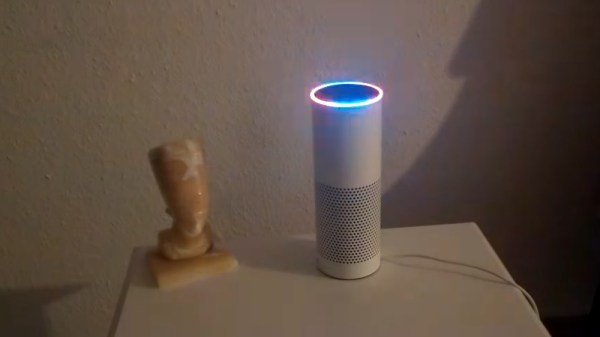Sometimes you find a commercial product that is almost, but not exactly perfect for your needs. Your choices become: hack together a DIY replacement, or hack the commercial product to do what you need. [Daniel] chose door number two when he realized his Yamaha MusicCast smart speaker was perfect for his particular use case, except for its tragic lack of line out. A little surgery and a Digital-to-Analog Converter (DAC) breakout board solved that problem.

[Daniel] first went diving into the datasheet of the Yamaha amplifier chip inside of the speaker, before realizing it did too much DSP for his taste. He did learn that the chip was getting i2s signals from the speaker’s wifi module. That’s a lucky break, since i2s is an open, well-known protocol. [Daniel] had an Adafruit DAC; he only needed to get the i2s signals from the smart speaker’s board to his breakout. That proved to be an adventure, but we’ll let [Daniel] tell the tale on his blog.
After a quick bit of OpenSCAD and 3D printing, the DAC was firmly mounted in its new home. Now [Daniel] has the exact audio-streaming-solution he wanted: Yamaha’s MusicCast, with line out to his own hi-fi.
[Daniel] and hackaday go way back: we featured his robot lawnmower in 2013. It’s great to see he’s still hacking. If you’d rather see what’s behind door number one, this roll-your-own smart speaker may whet your appetite.




















